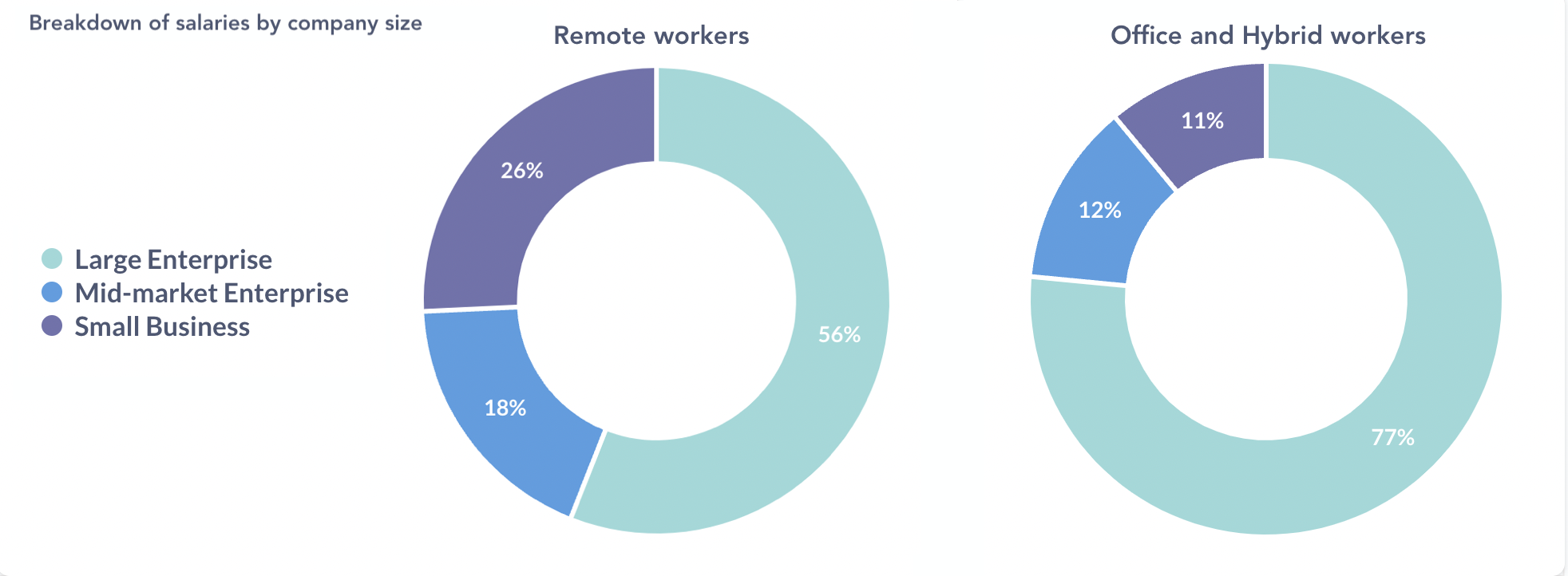(Salary figures are in USD for the year 2023)
In today's job market, understanding how work arrangements affect salaries is crucial. Let's dig into the data to uncover some interesting insights.
Work Arrangements Breakdown
First up, it's clear that a big chunk – 43% – of this year's salaries belongs to office workers. This tells us that traditional in-office work is still a significant part of the job landscape. Despite all the talk about remote work during the pandemic, it's holding its own at 27%.

But here's the cool part: when we look at the numbers more closely, we see that remote worker salaries have stayed pretty stable from Q2 - 2022 to Q2 - 2023, bouncing around between 25.6% and 28.2%. This suggests that remote work isn't just a temporary solution; it's become a consistent and significant part of the workforce.

Remote Work Around the World
The list of leading US metropolitan areas with the highest remote worker populations is quite diverse, from tech-heavy places like Silicon Valley to big cities like New York and even Atlanta. Moreover, on the global front, Vancouver, Berlin, London, Sao Paulo, Montreal and Warsaw, have also established themselves as remote work hubs. It's clear that remote work is catching on everywhere. Factors like tech culture, lifestyle, and costs all play a role.

Median Total Compensation
Taking a look at median total compensation by work arrangement reveals some interesting trends. Office workers bring in around $178,500 on average. Hybrid workers earn just a bit less, with a median total compensation of $170,000. Meanwhile, remote workers are close behind, making about $164,000, which is roughly 8% less compared to what office workers earn.

As an example, we can take a look at the median total compensation of Senior Software Engineers for some companies. Remote Senior Software Engineers at companies like Microsoft and Google earn pretty much the same as their office peers. But then there's Salesforce, Amazon and Facebook where office-based Senior Software Engineers rake in significantly more than their remote counterparts.

Company Size Matters
As we dig into the remote and in-office / hybrid arrangement salaries, some interesting patterns come to light depending on a company's size. It becomes evident that within large corporations, there is a notable preference for office&hybrid arrangements. Conversely, mid-market enterprises and small businesses tend to show a stronger preference for remote work options.

Remote Work Trends
Remote worker median total compensation began at $164,500 in August 2022, experienced a dip to $150,000 by December 2022, but showed a promising rebound, reaching $170,000 as early as August 2023. These trends indicate a consistent recovery in remote worker compensation following the 2022 decline.

As we conclude this exploration of remote worker salaries, one thing becomes clear: the world of work is transforming. Understanding the compensation trends, the cultural shifts, and the preferences in different company sizes is essential in making informed decisions.

